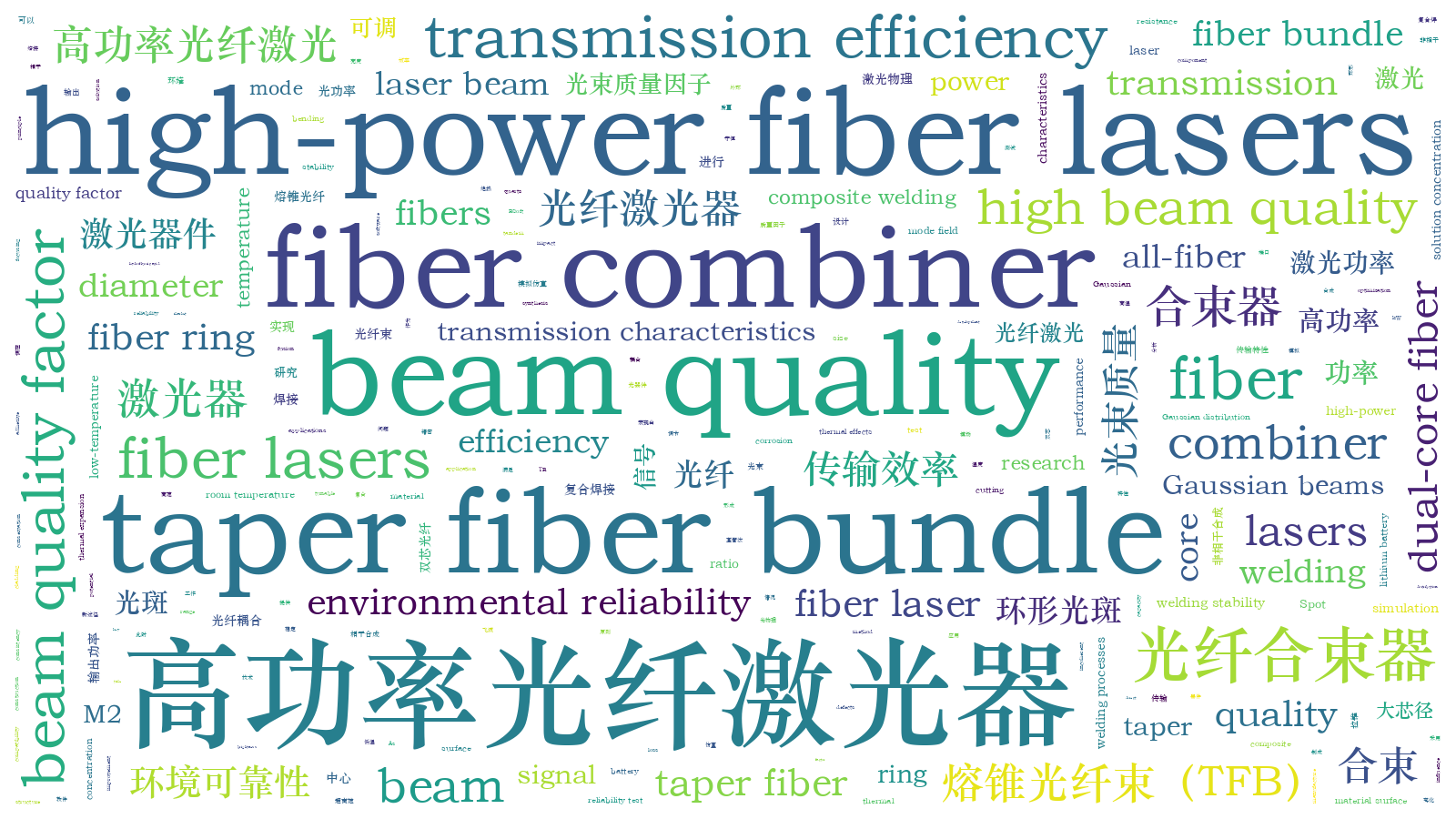高功率大芯径环形光斑可调信号合束器的研究【增强内容出版】
Adjustable-ring-mode fiber lasers hold significant application value in the field of lithium battery welding, with the fiber combiner serving as a pivotal component, playing a crucial role in improving the performance of these fiber lasers. Presently, there is a growing body of research dedicated to power improvement and beam quality optimization for signal combiners. This research predominantly revolves around modifying the number of input ports and varying the core diameter of the output fiber. Comparatively, there is a dearth of studies focusing on circular beam adjustable signal combiners. Compared with traditional high-power fiber lasers, the adjustable-ring-mode fiber laser can prevent spattering and improve welding stability. The performance of this combiner is such that the center and external ports can operate independently. Based on this working principle, a signal combiner featuring a large-core-diameter output fiber is fabricated. This combiner attains exceptional transmission efficiency, superior beam quality, and remarkable resistance to high and low temperatures, rendering it suitable for the new field of lithium battery welding.
Utilizing beam incoherent synthesis technology, a simulation of the beam combiner is conducted using RSoft software. This simulation scrutinizes alterations in its mode field. The designed beam combiner satisfies the principles of adiabatic taper and brightness conservation. The relationship between the taper ratio and input fiber diameter is analyzed, delineating the range of taper ratio that ensures the autonomous operation of inner and outer ring fibers, even with different input fiber diameters. Considering the impact of cone size on cutting and welding processes, the cone size is determined, and the variations in the three mode fields under varying taper ratios are simulated and analyzed. Subsequently, the influence of the hydrofluoric acid solution concentration on the corrosion time and corrosion efficiency is studied, with pretreatment of the input fibers based on the research findings. Finally, the taper fiber bundle is fabricated using the sleeve method, and the fusion cone fiber bundle and output fiber are fused together using a welding machine, culminating in the successful construction of the combiner.
The designed fiber combiner exhibits good transmission characteristics, with each port achieving a transmission efficiency of ≥98% (Table 1). As the power levels increase, the temperature at each port increases by 25?35 ℃ (Fig. 7). Each port of the fiber combiner can independently handle power levels exceeding 3 kW, and when operating in tandem, the inner and outer rings collectively handle power levels surpassing 6 kW. This underscores its capacity to perform reliably at higher power levels, ensuring exceptional stability. Furthermore, the beam quality factor (M2) of the central port is 1.76, with the central curve showcasing a good Gaussian distribution. Any defects observed may be attributed to quartz block head (QBH) compatibility. The external port M2 demonstrates remarkable consistency, as elucidated in Table 2, and the maximum M2 value recorded stands at a mere 88.2, underscoring the outstanding beam quality of both the central and outer rings. Compared with previous results, we consider that this combiner represents the best beam-quality performance. Further enhancements can be achieved through adjustments in the taper ratio or a change in the input fiber type. High- and low-temperature resistance tests show that the transmission efficiency of the combiner decreases slightly under both high- and low-temperature conditions; however, it remains above 97% (Fig. 10). This change is more pronounced at low temperatures than at high temperatures, likely attributable to thermal expansion and contraction-induced bending within the adhesive. Notably, an excessive cutting angle leads to greater welding loss.
In this study, we investigate the key components of a ring spot adjustable fiber laser beam combiner. Through theoretical research and simulation experiments, we find that the input fiber cladding diameter measures 100 μm and the TFB diameter is 330 μm. Subsequently, we fabricate a large-core-diameter toroidal beam spot tunable signal bundler with high beam quality, and we accomplish this with a taper ratio of 0.835. In the context of a large-core-diameter circular dual-core fiber, we manufacture a high-beam-quality large-core-diameter circular spot adjustable signal combiner. The overall transmission efficiency of the combiner exceeds 98%, and it exhibits good transmission characteristics. In the beam quality test, the center M2 is 1.76, while the outer ring M2 ranges between 82 and 89. By adjusting the input port, we can direct either circular Gaussian beams or circular flat top beams independently onto the surface of the working material, or simultaneously apply both to the material surface. Finally, we conduct an environmental reliability test on the combiner, subjecting it to three distinct temperature conditions. The results show that the efficiency of each port experiences a slight decline at both high and low temperatures in comparison to that at room temperature. Notably, the transmission efficiency is the lowest at lower temperatures, attributable to cone bending; however, the transmission efficiency still remains above 97%. The all-fiber ring-spot adjustable signal combiner exhibits the advantages of exceptional transmission characteristics, minimal thermal effects, and superior beam quality. Consequently, it holds substantial promise in the growing laser composite welding market. With the further development of laser composite welding, beam-mode adjustable signal combiners featuring varying output core diameters will undergo more extensive research. Additionally, potential modifications to the TFB structure may enable the center of the annular dual-core fiber to withstand higher power output, expanding its applications further.
万志强, 杨瑷碧, 杨光华, 于珊, 胡紫晔, 唐吉龙, 魏志鹏. 高功率大芯径环形光斑可调信号合束器的研究[J]. 中国激光, 2024, 51(8): 0801004. Zhiqiang Wan, Aibi Yang, Guanghua Yang, Shan Yu, Ziye Hu, Jilong Tang, Zhipeng Wei. Ring Light Spot Adjustable Signal Combiner with High Power and Large Core Diameter[J]. Chinese Journal of Lasers, 2024, 51(8): 0801004.







